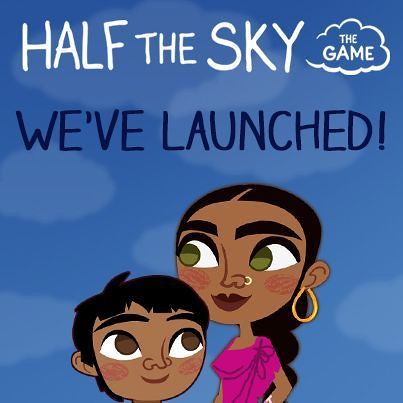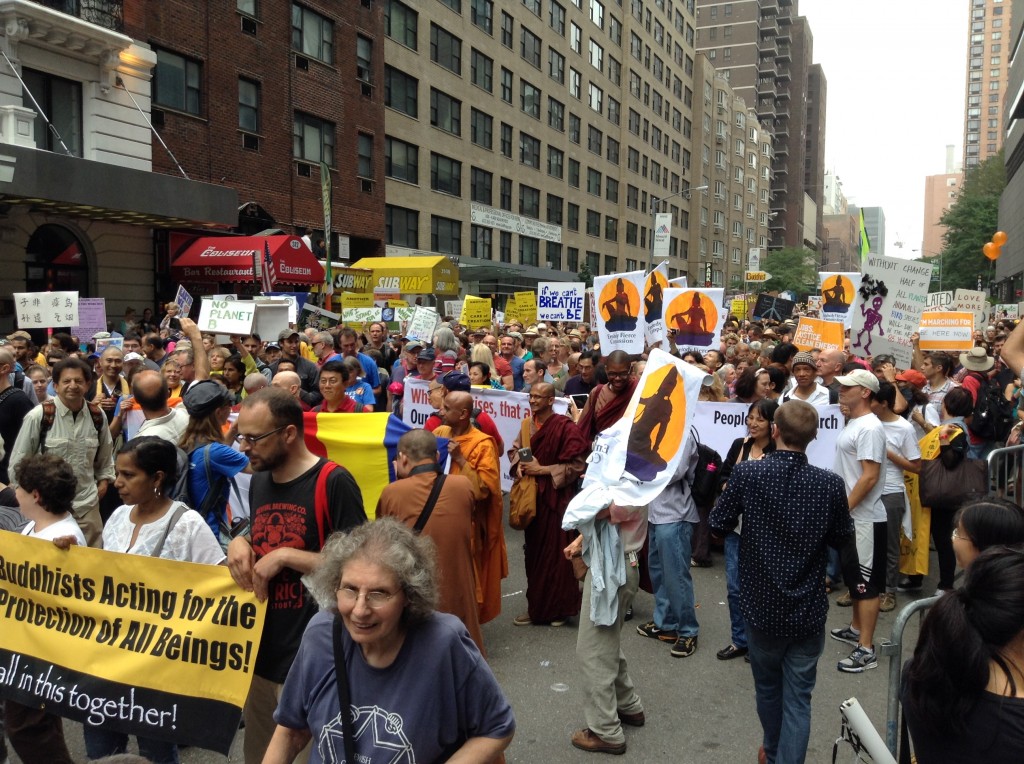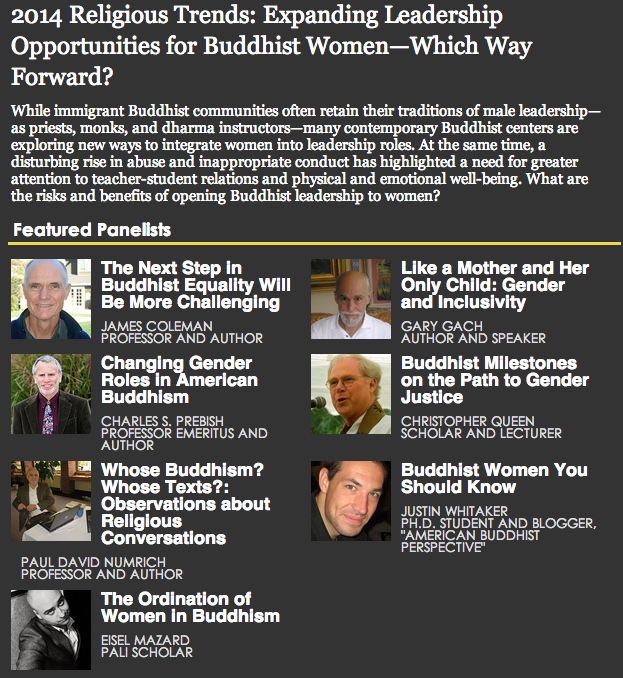 Today, the two high school football players accused of raping a classmate, “in a case that drew wide attention for the way social media spurred the initial prosecution and later helped galvanize national outrage over the episode,” were found guilty in Steubenville, OH. At the same time, another horrific gang rape occurred in India — this victim a Swiss tourist to the country. In addition, South Africa has just announced an “unprecedented” investigation into “an alleged campaign of politically motivated mass rape” in neighboring Zimbabwe — a “cross-border probe” that “marks the first time that rape is solely being scrutinized as a crime against humanity under a legal term known as ‘universal jurisdiction’.” Of course, South Africa has its own problems around rape; as the Christian Science Monitor noted last month:
Today, the two high school football players accused of raping a classmate, “in a case that drew wide attention for the way social media spurred the initial prosecution and later helped galvanize national outrage over the episode,” were found guilty in Steubenville, OH. At the same time, another horrific gang rape occurred in India — this victim a Swiss tourist to the country. In addition, South Africa has just announced an “unprecedented” investigation into “an alleged campaign of politically motivated mass rape” in neighboring Zimbabwe — a “cross-border probe” that “marks the first time that rape is solely being scrutinized as a crime against humanity under a legal term known as ‘universal jurisdiction’.” Of course, South Africa has its own problems around rape; as the Christian Science Monitor noted last month:
There [is] at least one category of violent crime…where South Africa [is a] global frontrunner: rape. There were 64,000 reported cases of rape last year, which experts say is likely a fraction of the true total. In one 2010 government survey, one in three South African men questioned admitted to raping at least one woman in his lifetime and one in four women said she had been the victim of a rape.
The timing of South Africa’s announcement about its planned investigation of Zimbabwe is particularly surprising, given that last month, Anene Booysens, a 17-year-old girl, was raped and murdered in a particularly brutal fashion, pushing many groups in the country towards large-scale, Indian-style demonstrations and protests. In covering the crime, The Guardian reported:
[Booysens] was badly mutilated and left for dead on a building site in the town of Bredasdorp, 80 miles east of Cape Town, and found by a security guard [the following] morning.
Hospital staff who fought to save her life were given counseling because of the horrific nature of her injuries, local media said.
All this news, combined with some of the matters I discussed last week — sexual assault in North American Buddhist communities, Buddhist nuns doing work to rescue girls from sex trafficking, and International Women’s Day 2013 — call us all to talk about the oppression of and violence against women constantly, until the problems are eradicated, and not just on particular days like International Women’s Day or V-Day.
But it’s not all bad news: this month also saw the release of Half the Sky Movement: The Game — “a new Facebook adventure that raises awareness & funds to empower women & girls across the world.” It’s the latest project of the Half the Sky Movement, which began with Nicholas Kristof and Sheryl WuDunn’s book, then social media, and then a PBS miniseries.
In celebration of this occasion, I thought I would post an updated, revised, expanded, and transcribed version of a dharma talk I delivered at the Rosemead Buddhist Monastery in Rosemead, CA, on April 8th, 2012. The talk was reposted on the official Facebook page of Half the Sky, with the webmaster writing: “After reading Half the Sky, Rev. Danny Fisher was inspired to deliver a dharma talk at the Rosemead Buddhist Monastery based on his experience reading it. Has Half the Sky or the issues it touches upon been discussed at your place of worship?” In addition, the talk was reposted on the official Twitter streams of both the movement and Mr. Kristof himself.
Please take a look and share your thoughts…
* * *
Buddhism After Half the Sky
As someone who has been practicing Buddhism for fifteen years now, I’m continually struck that the instructions that seem the simplest on the surface often have the most enormous implications. I’ve been thinking more and more about something I recite every day, and what it means in light of something I read only recently. First, that recitation…
As a mother would risk her life to protect her child, her only child, even so should one cultivate a limitless heart with regard to all beings. With good will for the entire cosmos, cultivate a limitless heart: Above, below, & all around, unobstructed, without enmity or hate.
Now that recent read: Half the Sky: Turning Oppression Into Opportunity for Women Worldwide by Nicholas D. Kristof and Sheryl WuDunn. During their time reporting from Beijing for the New York Times, the two were startled by statistics about the deaths and disappearances of women and girls in China, and that this received almost no attention in the world media. That shock and their subsequent work documenting the oppression of women around the world has resulting in this astounding book — without question one of the two or three most important I have ever read in my entire life.
The book offers a number of grim facts about the treatment of women and girls worldwide. Among them…
- As we speak, there are about 100 million women missing in the world—the result of gender discrimination; two million go missing each year. The authors put this in particularly chilling perspective, noting, “It appears that more girls have been killed in the last fifty years, precisely because they were girls, than were killed in all the battles of the twentieth century.”
- On another issue, their words are similarly pithy and halting: “Three million women and girls (and a very small number of boys) worldwide…can be fairly termed enslaved in the sex trade… While there has been progress in addressing many humanitarian issues in the last few decades, sex slavery has actually worsened.”
- The authors quote research from the World Health Organization, which indicates that “in most countries, between 30 percent and 60 percent of women had experienced physical or sexual violence by a husband or boyfriend.” They quote Lee Jong-wook, former director-general of the WHO, who adds, “Violence against women by an intimate partner is a major contributor to the ill health of women.”
- Speaking of women’s health, Kristof and WuDunn quote more research from the WHO, which shows that over half-a-million women died in pregnancy and childbirth in 2005. Worse still, “[While] child mortality has plunged [and] longevity has increased…childbirth remains almost as deadly as ever, with one maternal death every minute.” In addition, here’s something I didn’t know before reading the book: a woman is almost ten times more likely to die in pregnancy or childbirth in the United States than she is in Ireland, which is statistically the safest place in the world to give birth. It is much worse, however, in the developing world. The authors quote an article in the medical journal Clinical Obstetrics and Gynecology: “Maternal deaths in developing countries are often the ultimate tragic outcome of the cumulative denial of women’s human rights. Women are not dying because of untreatable diseases. They are dying because societies have yet to make the decision that their lives are worth saving.”
- Kristof and WuDunn also note that 57 percent of the 115 million children worldwide who have dropped out of grammar school are girls. Depending on where in the world you’re looking, the gender disparity is even greater: “in South and West Asia, two thirds of the children who are out of school are girls.” Frustratingly, some relatively simple and inexpensive solutions could be applied right away to help correct this problem, including deworming, creating greater access to feminine hygiene products, iodizing salt, and simple financial planning.
- The authors report that an act of genital cutting occurs somewhere in the world once every ten seconds. (Let’s say that you spend fifteen minutes looking at this text. Ninety women will be cut in the space of that time.)
Though Kristof and WuDunn’s book certainly underscores the compelling and obvious moral case for the empowerment of women, one valuable new element it brings to the table is the practical case for the empowerment of women. Among other things, they discuss the “Girl Effect” in East Asia, to which China’s economic growth owes much. This is not only about doing right by women, but also recognizing their crucial role in development — indeed, the “Girl Effect” demonstrates clearly that we have no hope of alleviating global poverty without women and girls.
The authors also point out that after the terrorist attacks of September 11th, 2001, “some security experts noted that the countries that nurture terrorists are disproportionately those where women are marginalized.” So there are indications that women, and their respect and empowerment, are crucial to curbing global conflict as well.
But the oppression of women is a massive problem, and an insidious one too. Pointing out that women “routinely manage brothels in poor countries…ensure that their daughters’ genitals are cut…feed sons before daughters…[and] take their sons but not their daughters to clinics for vaccination,” they offer the disquieting observation that “women themselves absorb and transmit misogynistic values, just as men do. This is not a tidy world of tyrannical men and victimized women, but a messier realm of oppressive social customs adhered to by men and women alike.”
As a mother would risk her life to protect her child, her only child, even so should one cultivate a limitless heart with regard to all beings. With good will for the entire cosmos, cultivate a limitless heart: Above, below, & all around, unobstructed, without enmity or hate.
So what can we, each of us, do about this? As Kristof and WuDunn note, “The United Nations and the aid bureaucracies have undertaken a relentless search for technical solutions — including improved vaccines and new processes for boring wells — and those are important. But progress also depends on political and cultural remedies, and, frankly on charisma.” They go on to add, “While empowering women is critical to overcoming poverty, it represents a field of aid work that is particularly challenging in that it involves tinkering with the culture, religion, and family relations of a society that we often don’t fully understand.” As a Buddhist minister and professor engaged in training future chaplains, this struck me in particular: this is an area that those of us in ministry professions have been trained to work in. Indeed, at University of the West, the Buddhist-inspired university where I direct a Master of Divinity program, we train our chaplaincy students in things like multicultural care and counseling, religious pluralism, family systems, and communications. We need to figure out how to better apply the tools of religious leadership and spiritual care to these larger efforts to support and empower women. Additionally, as clergy and teachers, we need to continue our own education so as to be more effective: as Larry Kent Graham points out in his article “From Relational Humanness to Relational Justice: Reconceiving Pastoral Care and Counseling” in Pamela D. Couture and Rodney J. Hunter’s Pastoral Care and Social Conflict, if religious professionals are to be effective agents in the quest for “relational justice,” theological education and training in spiritual care and counseling will require ”new educational competencies, including working, practical knowledge of social ethics and public policy…contextual therapies, social work, and knowledge of culture and personality.”
Of course, as Kristof and WuDunn note, part of the problem here has been what they call the “God gulf” — the deliberate separation between the efforts of secular (usually liberal) organizations and individuals, and those of the religious (usually conservative) organizations and individuals. It’s vitally important, though, that these communities work together. The authors continue: “Secular bleeding hearts and religious bleeding hearts will have to forge a common cause. That’s what happened two centuries ago in the abolitionist movement, when liberal deists and conservative evangelicals joined forces to overthrow slavery. And it’s the only way to muster the political will to get now-invisible women onto the international agenda.” Though we may not speak of God, I think many Buddhists are beginning to reflect on this gulf as well. Ven. Bhikkhu Bodhi’s Buddhist Global Relief and Dzongsar Khyentse Rinpoche’s Lotus Outreach, for example, are humanitarian organizations that have made a point of working closely with existing secular organizations. In my own small ways, I’m trying to work on that too: at this time last year, along with Ven. Bhikkhu Bodhi and others, I attended a meeting at the White House to discuss service with other religious leaders and a number of cabinet departments and agencies, and the ways we all can better collaborate to care for others.
As a Buddhist minister, I have been tasked by my teachers and preceptors with working on my own individual development through learning and practice of the Dharma; assisting the monastic community with various temple functions; and cooperating and communicating with others in the Buddhist community and those from other faiths for better understanding and greater social harmony. This book has caused me to reflect more and more on the full meaning of these and other instructions.
As a mother would risk her life to protect her child, her only child, even so should one cultivate a limitless heart with regard to all beings. With good will for the entire cosmos, cultivate a limitless heart: Above, below, & all around, unobstructed, without enmity or hate.
Reading Half the Sky has been a powerful reminder that these are just words — empty, meaningless words — if we don’t put them into practice, if we don’t act. As Kristof and WuDunn argue in their point, the oppression of women is the “central moral challenge of our time.” As Buddhists, we have much work to do before these words mean very much: in addition to following the steps to help that the authors lay out, I think we would do well to look carefully, fearlessly, at where we can and must do better as practitioners and especially as spiritual leaders. As Bonnie J. Miller-McLemore and Herbert Anderson write in their article “Gender and Pastoral Care” for Pastoral Care and Social Conflict, gender issues have “created new situations for pastoral care and a need to reconsider the framework of pastoral theology… A central task of pastoral theology must be to examine the implications of gender differences, to define the hidden gender subtexts that permeate the culture and prevent human flourishing, and in some cases, to work toward reconciliation.”
An example: many speak of the powerful messages and images of equality and freedom in the Buddhist traditions. While I do believe that many are indeed there — the recitation I keep coming back to says “all beings,” not “all Buddhists” or “all men,” but “all beings” — there are others that we would do well to examine further, if only to be mindful — vigilent even — of our traditions’ blind-spots and shortcomings. For instance, the remarkable Buddhist scholar Natalie D. Gummer points to one of the most famous examples of this in the much-beloved Mahayana text the Vimalakirti Nirdesa Sutra. In the entry on “Women” for the Encyclopedia of Buddhism, she writes, “[In this text], a wise female deity transforms the hapless Shariputra into a woman in order to demonstrate, through the apparent arbitrariness of gender, the principle of nonduality. While some scholars would see in this episode both a powerful female figure and the dismantling of gender categories, it should also be noted that the female deity might be powerful in this context precisely because she is so unusual, so unconventional, and that gender breakdown might function as such a trenchant symbol of nonduality precisely because the gender hierarchy/dichotomy was so deeply entrenched in Buddhist communities. Herein lies the difficulty of interpreting female symbols in relation to women’s lives: This story could be seen either as empowering women, or as revealing their social disempowerment — or both.”
In terms of other blind-spots and shortcomings, we do well also to listen to the prophetic voices of Buddhist women, asking us to consider institutional sexism and misogyny in areas where it has yet to be fully addressed. When Buddhist teachers and clergy commit acts of sexual abuse against women in practice communities, we often talk a great deal about lying, vow-breaking, and the exploitation of the power differential. What we don’t talk much about — if at all — is misogyny. In early January of 2011, at my own website, I was honored to host a guest post by Roshi Joan Halifax about the scandals and accusations about Eido Shimano Roshi and the Zen Studies Society. Roshi wrote in her post, “The misogynistic abuse is not only in terms of the usual gender issues related to who has responsibility and authority (women usually don’t have much, if any), but it is well expressed through mistreatment of women, through sexual boundary violations of women, and the psychological abuse of women.” (Kristof and WuDuun underscore what can happen in places where there are little to no checks on authority figures taking advantage of their position in this way: “Half of Tanzanian women, and nearly half of Ugandan women, say they were abused by male teachers, and one third of reported rapes of South African girls under the age of fifteen are by teachers.”)
Then, of course, there is the issue of ordaining women as full bhikkshunis. In many traditions, this has been a struggle, an opportunity denied to women. This issue was in the news in a big way not long ago. At the end of October 2009, a group of Buddhist nuns were ordained during a ceremony at Bodhinyana Buddhist Monastery in Perth, Australia. On November 1st, preceptor Ajahn Brahm was told by the leadership of Wat Pa Phong that Bodhinyana Monastery would be disavowed if he did not publicly state that the ordination was invalid. When he refused, Bodhinyana Buddhist Monastery was disavowed by Wat Pa Phong. The incident brought a flurry of responses from those involved, observations from prominent teachers around the world, and lots of chatter in the blogosphere.
As a mother would risk her life to protect her child, her only child, even so should one cultivate a limitless heart with regard to all beings. With good will for the entire cosmos, cultivate a limitless heart: Above, below, & all around, unobstructed, without enmity or hate.
In the traditions that deny full bhikkshuni ordination to women, reasons are given for the decision. “The tradition died out, and the Vinaya is specific about how to reintroduce it.” “The tradition never reached this country, and, again, the Vinaya is specific about how it has to be introduced.” And so on. At best, these reasons exemplify a lack of critical, historical perspective or sympathy; at worst, they’re excuses, feigned helplessness, we cynically use to hide the truth: that institutional sexism and violence against women are as much a part of Buddhism as any other religion.
The fact is that Ajahn Brahm and others like him are right to do what they did and are continuing to do. More of us need to follow their example. The full inclusion of women cannot wait anymore. Not a second longer. As Martin Luther King so famously put it, “The word ‘Wait’ has almost always meant ‘Never.’ We must come to see, with one of our distinguished jurists, that ‘justice too long delayed is justice denied.’” More of us need to challenge — even break — the rules. They are rules that are unjust and promote only the worst in us, never the best. Break the rules if you must. If it’s a choice between promoting equality or oppression, then you’re absolutely right to do it.
As Buddhists we have a choice to make: allegiance to our all-too-human institutions and traditions, or allegiance to that beautifully articulated teaching of the Buddha himself…
As a mother would risk her life to protect her child, her only child, even so should one cultivate a limitless heart with regard to all beings. With good will for the entire cosmos, cultivate a limitless heart: Above, below, & all around, unobstructed, without enmity or hate.











